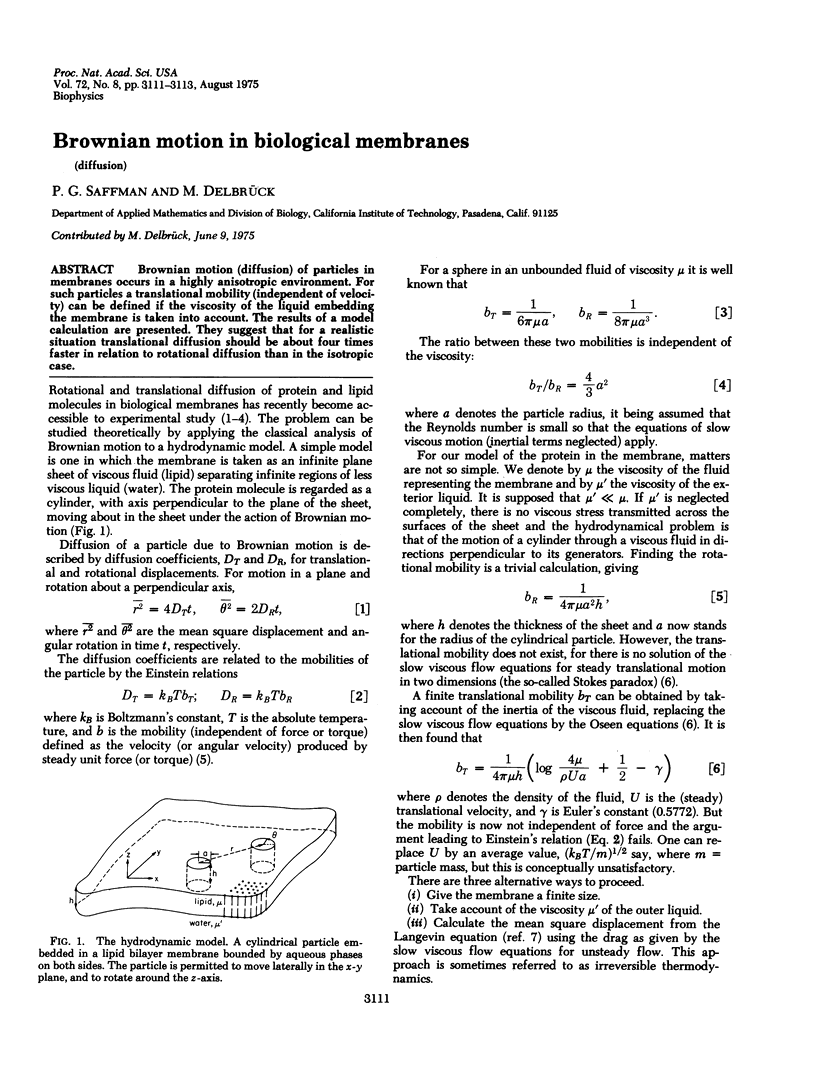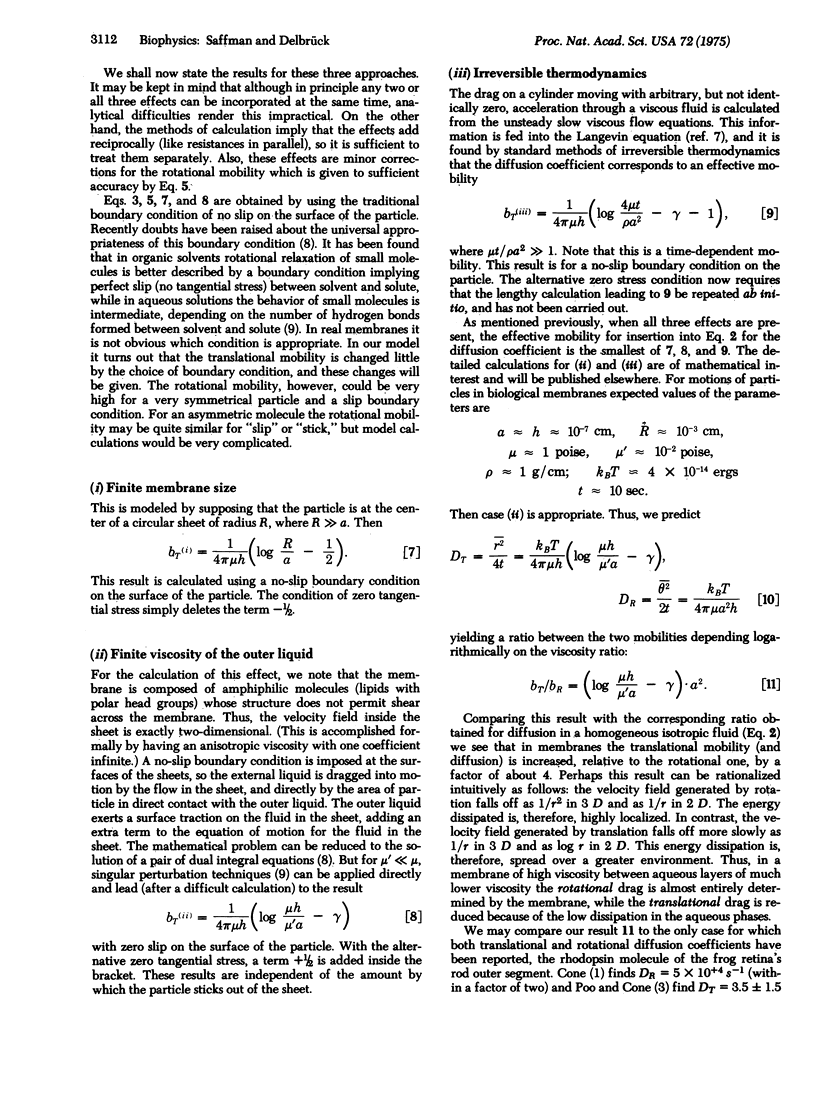Abstract
Brownian motion (diffusion) of particles in membranes occurs in a highly anisotropic environment. For such particles a translational mobility (independent of velocity) can be defined if the viscosity of the liquid embedding the membrane is taken into account. The results of a model calculation are presented. They suggest that for a realistic situation translational diffusion should be about four times faster in relation to rotational diffusion than in the isotropic case.
Full text
PDF


Selected References
These references are in PubMed. This may not be the complete list of references from this article.
- Cone R. A. Rotational diffusion of rhodopsin in the visual receptor membrane. Nat New Biol. 1972 Mar 15;236(63):39–43. doi: 10.1038/newbio236039a0. [DOI] [PubMed] [Google Scholar]
- Edidin M. Rotational and translational diffusion in membranes. Annu Rev Biophys Bioeng. 1974;3(0):179–201. doi: 10.1146/annurev.bb.03.060174.001143. [DOI] [PubMed] [Google Scholar]
- Poo M. M., Cone R. A. Lateral diffusion of phodopsin in Necturus rods. Exp Eye Res. 1973 Dec 24;17(6):503–510. doi: 10.1016/0014-4835(73)90079-1. [DOI] [PubMed] [Google Scholar]
- Poo M., Cone R. A. Lateral diffusion of rhodopsin in the photoreceptor membrane. Nature. 1974 Feb 15;247(5441):438–441. doi: 10.1038/247438a0. [DOI] [PubMed] [Google Scholar]


